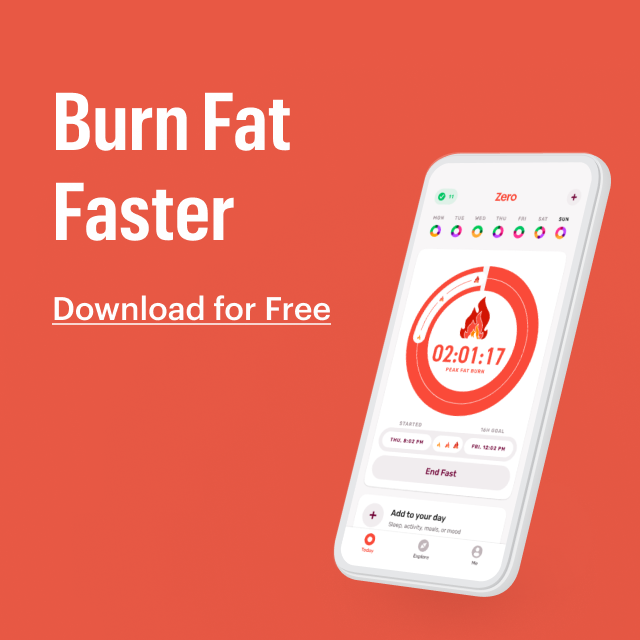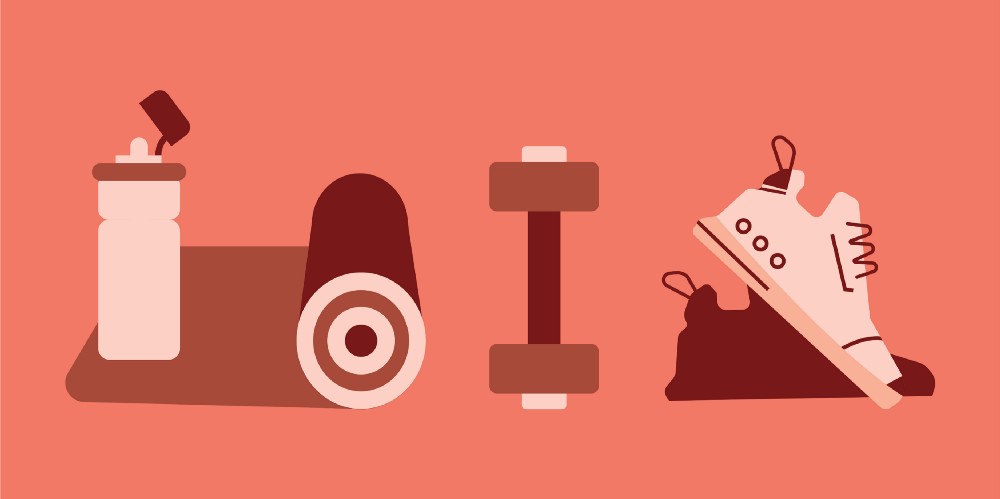Written and medically reviewed by Rich LaFountain, PhD
We all know physical activity is important, but many of us struggle to get our daily dose of movement. In fact, according to a recent report by the CDC, as many as 25% of U.S. adults are not active enough to protect their health — in practical terms, that’s around 150 to 300 minutes of moderate-to-vigorous physical activity each week.
The pros of leading an active lifestyle are numerous for both the short and long-term. In fact, regardless of your current habits, physical activity is one of the most effective ways to invest in your health. Here’s why!

How Daily Movement Benefits You in the Short-Term
After a single bout of moderate-to-vigorous exercise (think a brisk walk or jogging), your body starts responding immediately — kind of like a physiological “thank you.”
#1. It Lowers Your Blood Pressure
Just 15 to 30 minutes of physical activity can lower blood pressure for several hours after the fact. That’s basically a quick stroll around the block with Fido!
#2. It Strengthens Your Immune System
Moderate physical activity that lasts 60 minutes (or less!) has been shown to boost immunosurveillance (the circulation of your body’s defense cells to identify and remove pathogens) as well as prevent illnesses such as the common cold and the flu.
#3. It Helps with Brain Cognition and Anxiety
Engaging in daily movement has immediate positive impacts on brain function and can even lessen feelings of anxiety. Brief, moderate-intensity physical activity lasting at least 10 to 20 minutes is enough to boost executive function and recall memory.
#4. It Betters Your Sleep
Early birds get the worm and catch the Zs. Research shows that a morning workout can improve nocturnal sleep quality. Sign us up!
How Daily Movement Benefits You in the Long-Term
Physical activity is by no means a one-and-done deal. All the benefits you reaped in the short-term accumulate to a bountiful harvest in the long-term, which means that, by prioritizing movement, you’re moving — metaphorically and perhaps literally — in the right direction.
#5. It Aids in Healthy Weight Maintenance
A 10-year research study with over 15,000 participants demonstrates that virtually any increase in physical activity — yes, even golf — aids in maintaining a healthy body weight.
#6. It Supports Metabolic Health
According to a 12.5-year study, physical activity in the form of daily tasks and chores (like mowing the grass or gardening) is associated with improved metabolic health and reduced all-cause mortality rates.
#7. It Encourages Fat-Burning and Enhances Body Composition
Research demonstrates that fasted exercise sends signals to your body that stimulates fat-burning. Routine, low-to-moderate-intensity exercise while in a fasted state of at least 12 hours is shown to fat-burning machinery and may contribute to enhanced body composition.
#8. It Contributes to Musculoskeletal Strength
Physical activity is crucial to building healthy muscles and strong bones — especially for women, who may be at higher risk for osteoporosis. Building consistent movement habits now only becomes more important as we get older because our bodies gradually lose the ability to maintain our hard-earned muscle mass and bone density.
#9. It Supports Cardiovascular Health
One of the most well-known benefits of exercise is cardiovascular health — that’s where “cardio” got its namesake, after all! Research dating back to the 1950s compared heart disease rates of active bus conductors with seated bus drivers, and coronary heart disease was 50% less prevalent for bus conductors who spent their day moving, walking about, and climbing stairs.
#10. It Prevents Cancer
Research suggests that up to 1 out of 5 cancer cases could be attributed to lack of sufficient physical activity. And, if you want to be extra cautious, the American Cancer Society recommends exceeding 300 minutes of physical activity per week for optimal cancer prevention.
So What Do I Do Now?
So you know the incredible benefits of being physically active, but how can you incorporate this knowledge into your day-to-day? Getting active doesn’t have to be hard. Shoot for 20 to 30 minutes of movement and you’re golden. Walking, dancing, mowing the lawn, yoga, CrossFit, running after your sock-loving pup — it all counts.
Physical activity — like nutrition and sleep — is a pillar of good health. But, in order to maximize the benefits of daily movement, we encourage you to stack it on top of other healthy habits. Before you know it, your lifestyle will be changed for the better so you can enjoy a longer, happier life.
References
Centers for Disease Control and Prevention. (2022). Adult physical inactivity prevalence maps by race/ethnicity. Website: https://www. cdc. gov/nchs/fastats/exercise. Htm.
Piercy, K. L. et al. (2018). The physical activity guidelines for Americans. Jama, 320(19), 2020-2028.
Reiner, M. et al. (2013). Long-term health benefits of physical activity–a systematic review of longitudinal studies. BMC public health, 13, 813.
Guidry, M. A. et al. (2006). The influence of short and long duration on the blood pressure response to an acute bout of dynamic exercise. American heart journal, 151(6), .
Nieman, D. C., & Wentz, L. M. (2019). The compelling link between physical activity and the body’s defense system. Journal of sport and health science, 8(3), 201–217.
Pontifex, M. B. et al. (2019). A primer on investigating the after effects of acute bouts of physical activity on cognition. Psychology of Sport and Exercise, 40, 1-22.
Anderson, E., & Shivakumar, G. (2013). Effects of exercise and physical activity on anxiety. Frontiers in psychiatry, 4, 27.
Chang, Y. K. et al. (2012). The effects of acute exercise on cognitive performance: a meta-analysis. Brain research, 1453, 87–101.
Morita, Y., Sasai-Sakuma, T., & Inoue, Y. (2017). Effects of acute morning and evening exercise on subjective and objective sleep quality in older individuals with insomnia. Sleep medicine, 34, 200–208.
Littman, A. J. et al. (2005). Effects of physical activity intensity, frequency, and activity type on 10-y weight change in middle-aged men and women. International journal of obesity (2005), 29(5), 524–533.
Owojaiye, S. O. et al. (2020). Controlled Aerobic And Anaerobic Exercises For Regulating Calories In Human Body: Health Analysis And Evaluation For Averting Hypo-Hyperglycemia. Oguya International Journal of Contemporary Issues (OIJCI), 1(1), 1-12.
Ekblom-Bak, E. et al. (2014). The importance of non-exercise physical activity for cardiovascular health and longevity. British journal of sports medicine, 48(3), 233–238.
Vieira, A. F. et al. (2016). Effects of aerobic exercise performed in fasted v. fed state on fat and carbohydrate metabolism in adults: a systematic review and meta-analysis. The British journal of nutrition, 116(7), 1153–1164.
Zouhal, H. et al. (2020). Exercise Training and Fasting: Current Insights. Open access journal of sports medicine, 11, 1–28.
Hughes, V. A. et al (2001). Longitudinal muscle strength changes in older adults: influence of muscle mass, physical activity, and health. The journals of gerontology. Series A, Biological sciences and medical sciences, 56(5), B209–B217.
Carter, M. I., & Hinton, P. S. (2014). Physical activity and bone health. Missouri medicine, 111(1), 59–64.
McGuigan, F. E. et al. (2017). Musculoskeletal health and frailty. Best practice & research. Clinical rheumatology, 31(2), 145–159.
Shiroma, E. J., & Lee, I. M. (2010). Physical activity and cardiovascular health: lessons learned from epidemiological studies across age, gender, and race/ethnicity. Circulation, 122(7), 743–752.
Morris, J. N. et al. (1953). Coronary heart-disease and physical activity of work. Lancet (London, England), 262(6795), 1053–1057.
Friedenreich, C. M. et al. (2010). State of the epidemiological evidence on physical activity and cancer prevention. European journal of cancer (Oxford, England : 1990), 46(14), 2593–2604.
Rock, C. L. et al. (2020). American Cancer Society guideline for diet and physical activity for cancer prevention. CA: a cancer journal for clinicians, 70(4), 245–271.
- Debunking 3 Myths Around Fasting and Thyroid Health - April 15, 2024
- Breaking Down Fast Breakers: How to Tell If Something Will Break Your Fast - March 4, 2024
- GLP-1s and Weight-Loss Medications vs. Lifestyle Interventions: What’s Right for You - February 5, 2024








